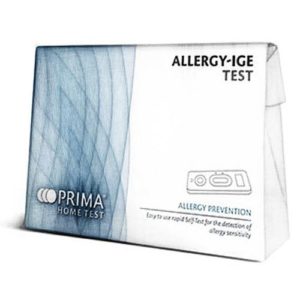For some people, a single macadamia nut cookie can be a deadly experience, while for others it is a sweet treat. Food allergies are no joke. Around 7% of children have food allergies. When you have a young child, giving them their first few bites of those danger foods can be a nerve racking experience. So much so, that some families who have food allergies running in their family, choose to give the first taste of these foods in the emergency room lobby—just in case.
If you’re wondering what foods are the most common, here are the top 5:
Milk
It’s called being lactose intolerant, and it is the most common food allergy in the world. In fact, over 65% of the world population is lactose intolerant, which means you are more likely to be allergic to milk than not. (Read our article, The Common Symptoms of Milk Allergy)
Despite this, milk is still a major staple of the world, and milk is included in everything from coffee drinks to cakes. Fortunately in most Western countries, such as the UK, it is required for major allergens to be listed on the label, and even if it is made in the same facility as another product using it, keeping everyone a little safer.
A home allergy test for milk can quickly determine if you are lactose intolerant.
Peanuts
Plastered all over the front of many school rooms and medical clinics is a huge picture of a peanut, crossed out. This is because common children’s snacks often contain peanuts, and a child who is allergic to them may end up accidentally harming the allergic child simply by touching them after touching a peanut. Peanuts are a common allergy, and also one of the most deadly.
People who are allergic to peanuts often have to carry an EpiPen with them for safety.
In severe cases of peanut allergy, just being in the same room as peanuts or peanut butter can trigger a life-threatening reaction. Symptoms can range from mild hives and itching to anaphylaxis, which can cause difficulty breathing, low blood pressure, and even death. Peanuts can also be hidden in many unexpected foods, such as sauces, candies, and baked goods, making it important for people with peanut allergies to always read food labels carefully. It is crucial for everyone to be aware of and sensitive to the dangers of peanut allergies to ensure the safety and well-being of those affected.
Eggs
You’ve likely enjoyed eggs in countless dishes, from breakfast favourites like scrambled eggs on toast to baked goods like quiche or cake. But for some, these humble food items are off the menu entirely due to an egg allergy. After milk and peanuts, eggs rank among the most common childhood food allergies in the UK.
An egg allergy occurs when your body’s immune system mistakenly identifies proteins in egg whites and yolks as harmful substances. Even minute amounts can trigger symptoms like skin rashes, nasal congestion, nausea, and in severe cases, anaphylaxis—a life-threatening whole-body allergic reaction.
For kids with an egg allergy, simple pleasures like birthday cakes or pancakes might be out of the question. And you can forget about getting your little one to try a runny yolk straight from the shell! Parents face the daunting task of scrutinizing every single food label and being ever-vigilant about cross-contamination.
However, there’s a silver lining: many children outgrow their egg allergy by age 16. So that sticky, delicious pavlova or scotch egg might just be a realistic dream a few years down the line. In the meantime, eggless baked goods and substitutes like aquafaba (the liquid from canned chickpeas) allow egg-allergy sufferers to savour many treats safely.
If you suspect an egg allergy, discuss it with your GP. With some simple adjustments and vigilance, living egg-free becomes manageable. Just think—no more silly arguments over who gets to lick the bowl after baking!
A home allergy test for eggs can quickly determine if you are allergic to them.
Strawberries
These sweet and juicy berries are also one of the top allergens in the world. Reactions can be as simple as a rash, or as bad as death from anaphylaxis. If you are allergic to strawberries, you should avoid eating them even if the allergy is mild, it’s possible for the allergy to get worse each time, and the next time could be deadly.
It’s important to note that while strawberries are a common allergen, they are not the only fruit that can cause an allergic reaction. Other fruits such as kiwi, pineapple, and mango can also trigger allergies in some individuals. If you suspect you may have a fruit allergy, it’s important to speak with a healthcare professional for proper diagnosis and treatment. In the meantime, avoid consuming any fruits that have caused a reaction in the past and carry an epinephrine auto-injector if necessary.
Tree Nuts
While we covered peanuts earlier, they are actually a legume. Tree nuts however, can be just as deadly. Tree nuts cover all the nuts that come from trees, and also seeds such as pine seeds, commonly added to salads. These nuts often sneak into cookies and breads, and the consequences can be severe.
If you’re allergic to nuts, you may need to avoid eating out or accepting baked goods from other people, as they can be slipped into almost anything.
It’s important to always read labels and ask about ingredients if you’re unsure. Even trace amounts of nuts can cause a reaction in some people, so it’s crucial to be vigilant.
In severe cases, nut allergies can cause anaphylaxis, a potentially life-threatening reaction that requires immediate medical attention. Symptoms include difficulty breathing, swelling of the throat or tongue, rapid heartbeat, and a sudden drop in blood pressure.
If you or someone you know has a nut allergy, it’s important to have an emergency plan in place and carry an epinephrine auto-injector (such as an EpiPen) at all times. And remember, it’s always better to err on the side of caution when it comes to allergies.
Home Allergy Test Kit
Dealing with allergies can have a significant impact on your quality of life, causing sneezing, itching, and difficulty breathing. Thankfully, numerous options are available to help manage and identify allergies, with home allergy test kits being an accessible and convenient solution.
These kits offer fast and reliable results, allowing you to take control of your health and avoid potential reactions and intolerances. With many options available for food or environmental allergies, finding an allergy test kit tailored to your specific needs is easy.
Using a home allergy test kit is straightforward; take the test, interpret the results, and use the information to make informed decisions about your health and well-being. Ruling out basic allergies can provide relief for those who have been struggling with undiagnosed symptoms.
If you experience symptoms such as lacrimation, redness on the skin, a rash, or repetitive sneezing, consider a basic allergy test such as the Prima Home Allergy Test Kit. For more specific requirements, kits such as the Cat Allergy Test Kit or Airborne Allergy Screen Kit may be more appropriate. To learn more about allergies, refer to the Allergy Testing FAQs.
Main photo: Anthony Cunningham for Zoom Health
Zoom Health is a leading UK supplier of Home Health Tests and Earplugs






